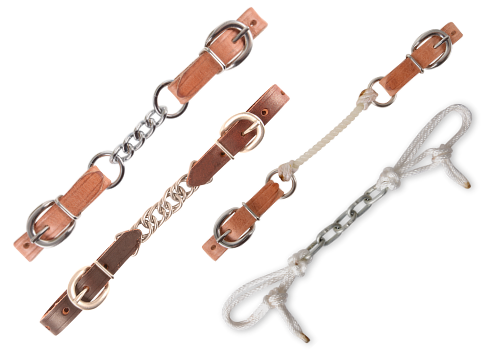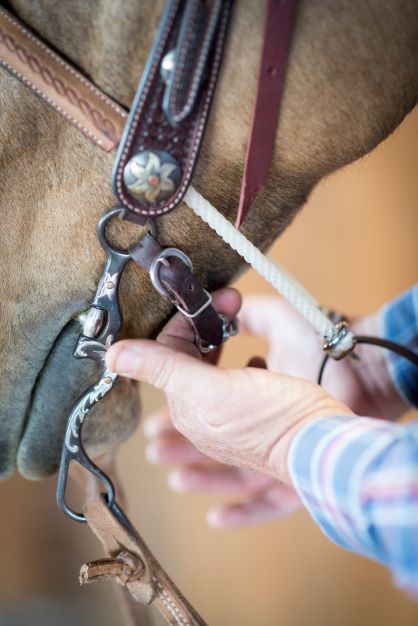Choosing the Right Curb Strap to Increase Bit Functionality and Performance
Types of Curb Straps and Curb Chains
Curb straps or curb chains are an important part of bit and headstall functionality, whether you ride Western or English. The material and the adjustment of the curb will determine the type of communication sent to your horse.
Leather Curb Straps
There are two basic types of curb attachments for a bit or hackamore, leather or chain. The basic flat leather curb strap is considered the mildest of options and is typically used on snaffle bits early in training. Many continue using a flat leather curb throughout a horses training progression if the horse shows no need for increase communication.
If more communication is needed through the curb strap, a braided leather curb is a good step up from the flat leather curb strap. These have more texture, so they add additional “feel” when contact is made with the horses chin. This concept will apply for every proceeding curb strap or curb chain.
Curb Chains
As curb straps progress in severity or communication, they will have a combination of leather buckles with a chain center. The leather provides some flexibility and “give” to the chain center when the curb is engaged into the horses chin. There is a variety of chain styles, from basic link chain to woven chain. The smoother the chain link, the less points of contact it will make on the chin. The more twisted or uneven edges on the chain, the more points of contact it will make. There are also variations of this, where the center of the curb is rawhide or nylon rope material. The principle still applies, the rawhide is going to send a stronger message than the nylon rope.
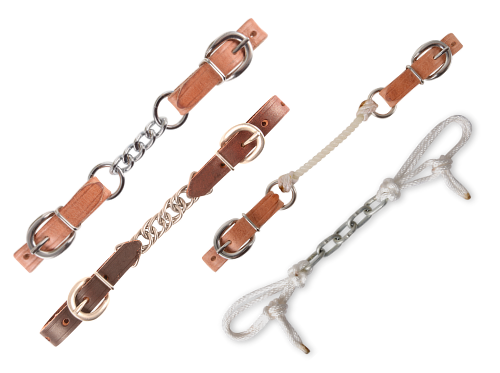
The solid curb chain is considered to be the strongest of curb options for obvious reasons. It is solid chain with no “give”. Curb chains are typically basic linked chain, but there are varieties of curb chains that are woven. Curb chains should be used with caution as they can be severe if not properly adjusted or paired with the wrong bit.
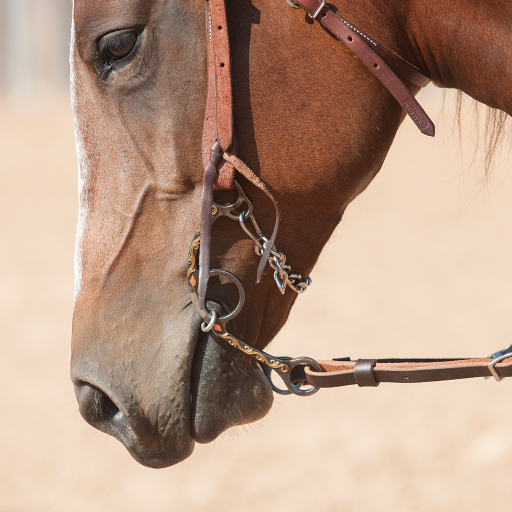
Curb Strap and Curb Chain Adjustment
The adjustment of the curb strap or curb chain is just as important as the material it is made of. The smooth leather curb straps that are typically used on snaffles for training, are attached loosely to the rings of the bit under the reins. At this stage, the curb strap is acting as a bit hobble that keeps the bit from sliding through the horses mouth. Bit hobbles can also be used for this.
Curbs Straps as a Primary or Secondary Signal
When using the curb strap or curb chain as a communication device, the adjustment will become more important. There are two schools of thought on curb straps adjustment; some want the curb to be a pre-signal to the horse that the bit is coming. Others want the curb to be a secondary signal once the bit is already engaged.
Curb Straps as a Primary Signal
If you decide that your horse needs a pre-signal to the bit, you will adjust the curb strap a little tighter. You can simply tighten the straps, or twist the strap to create a more textured edge, thus creating more points of contact with the horse’s chin.

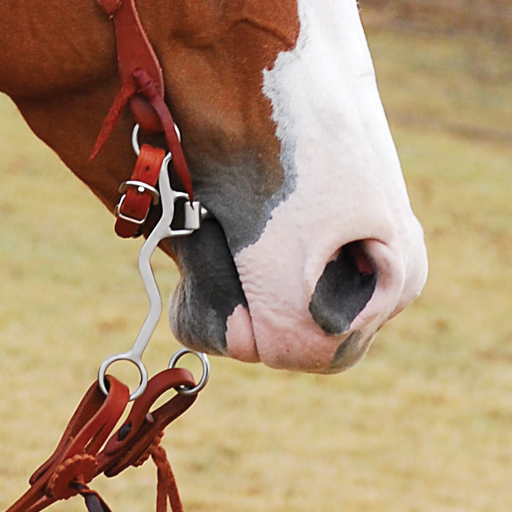
Curb Straps as a Secondary Signal
If you want the curb to act as secondary signal to the bit, it will be adjusted more loosely. Keep in mind, when a curb strap or curb chain becomes engaged, it also sends pressure to the horses poll.
Final Thoughts on Curb Straps
Some horses respond positively to a tighter curb strap, and you find that you can gather them in support of developing collection. Other horses may not like the feeling of the curb strap on their chin and subsequent pressure on the poll, and throw their head up and hollow out. This is where you as the rider need to be aware of how your tack is sending messages to your horse. Make sure you are listening, and adjust accordingly.

